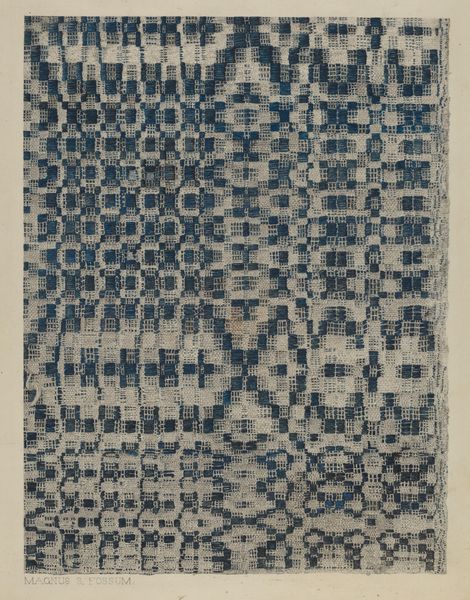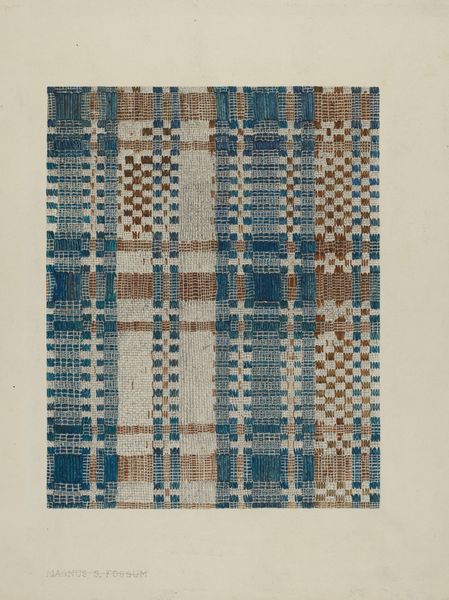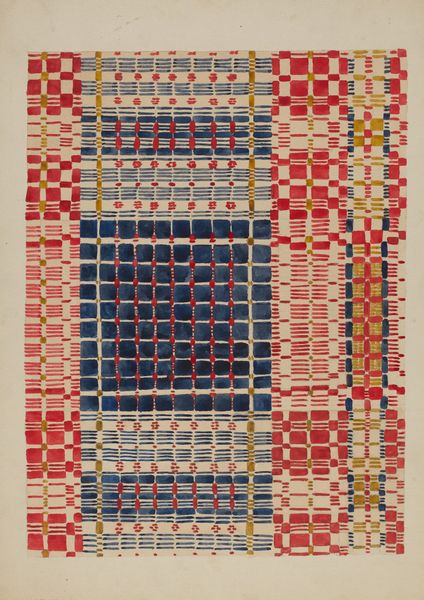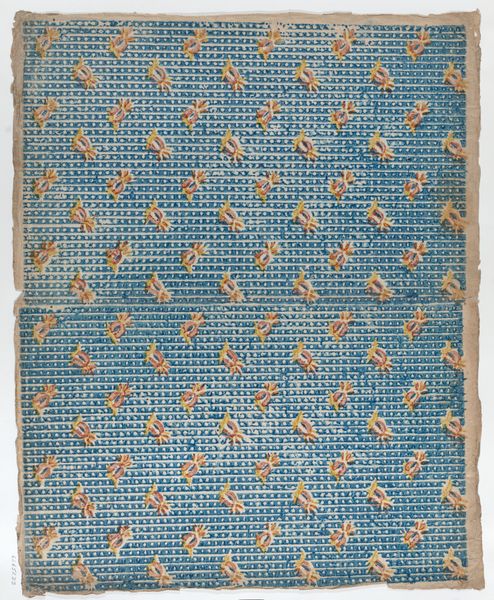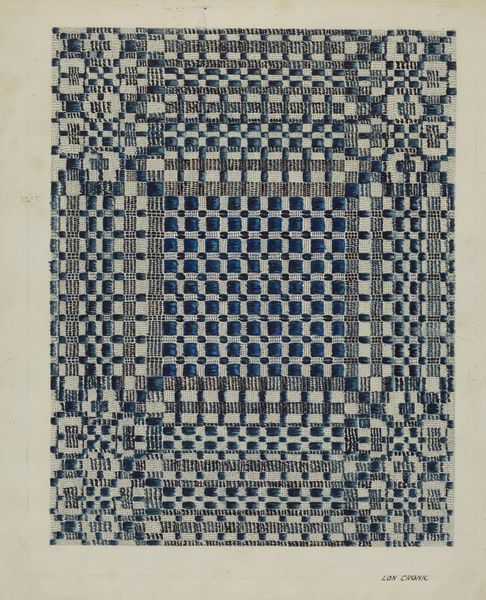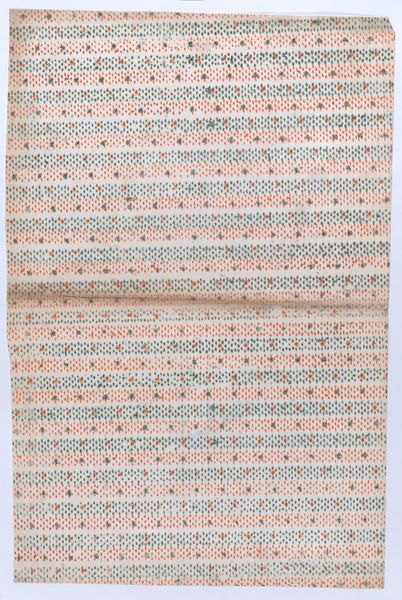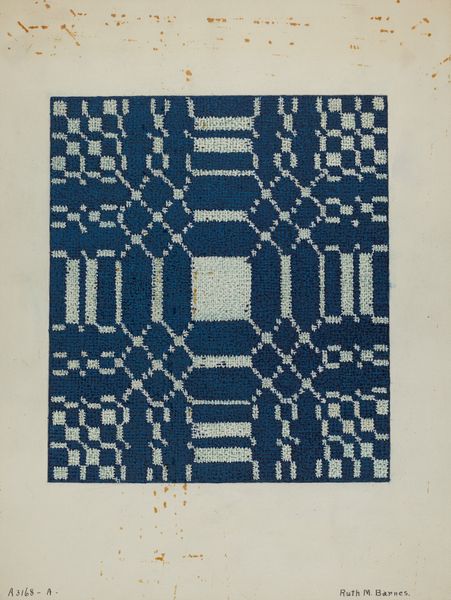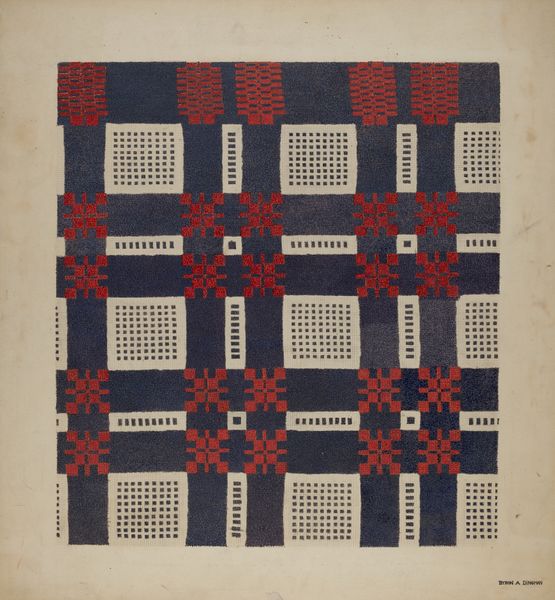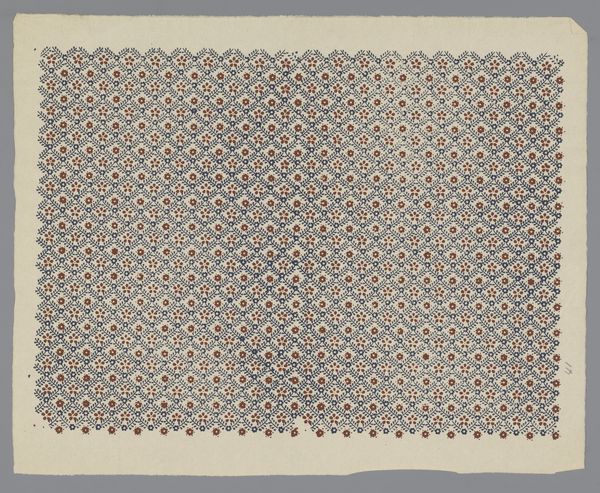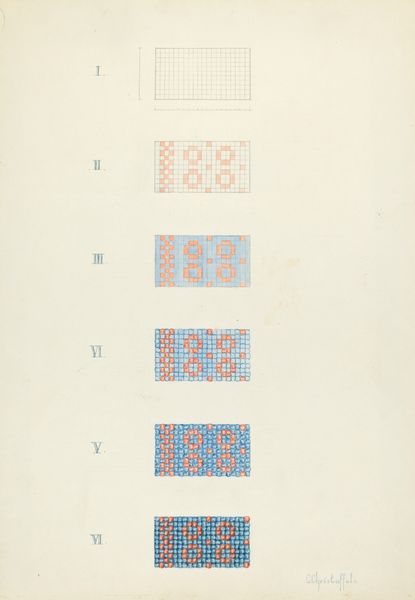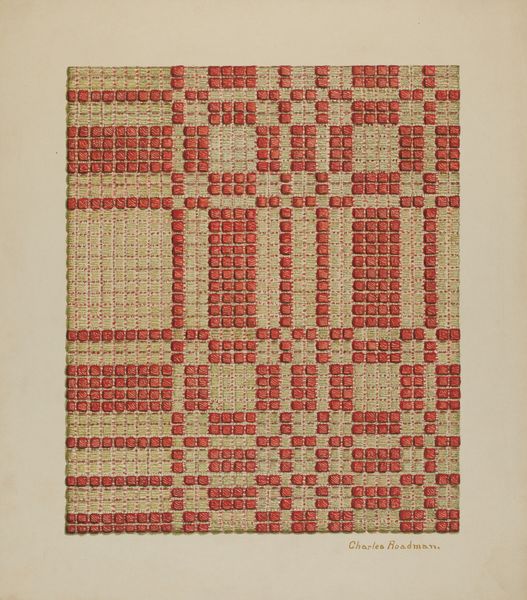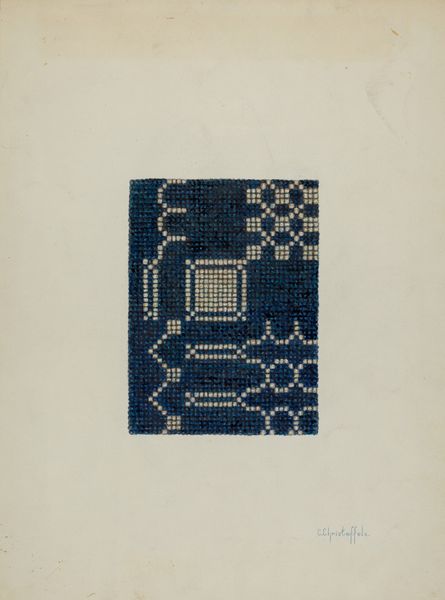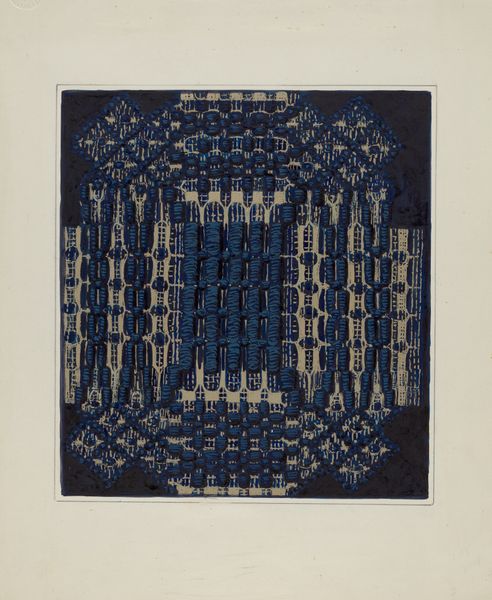
watercolor
#
water colours
#
watercolor
#
geometric
#
watercolor
Dimensions: overall: 40.6 x 31.7 cm (16 x 12 1/2 in.)
Copyright: National Gallery of Art: CC0 1.0
Curator: This artwork before us is a watercolor and ink drawing on paper by Sarkis Erganian, titled "Coverlet," created around 1940. Editor: Wow, instantly, I'm transported to a cozy, mid-century modern bedroom! It's like looking at the architectural plan for a blanket. I adore how these blues create an overall soothing, almost hypnotic effect. Curator: Hypnotic is an interesting choice. It’s actually a meticulous rendering of textile weaving patterns, very much within the Pattern and Decoration movement— a formal, structured exploration if you will, reduced to the essential elements of color and composition. Editor: Reduced, or revealed? I see it as an invitation to meditative states! You know, I can almost feel the artist considering each crossing of thread as they translated that textile weave onto paper. It whispers a gentle story of creation and devotion. It almost feels like code, or music! Curator: That reading plays nicely with certain perspectives. In semiotics, the repeated motifs function as signs, establishing relationships that structure the image's underlying formal order. Erganian uses abstraction and geometric shapes to capture the material's tactile and visual dimensions on the two dimensional picture plane. Editor: See, there’s warmth missing from the reading, though! The small variations in those geometric grids – where the watercolour bleeds ever so slightly– they bring so much humanity. To consider this a formal exercise misses what I see as the emotional resonance in the subtle variations of pattern. I wonder, was Erganian thinking of a loved one as he created this? I imagine a quiet focus. Curator: Well, focusing on the materiality offers other viewpoints. Watercolors allow a transparent quality that echoes textile openness, drawing attention to the formal interplay between structure and surface that transcends sentimental readings of art history. But if, in our mind's eye, we picture the coverlet translated back to cloth, the work completes its purpose. Editor: Perhaps the dialogue it has prompted now offers additional purpose to a simple drawing. What appears formal has inspired in me warmth, quiet and meditation. Curator: Indeed, we started at Erganian’s pattern, and it ends with the pleasure in art appreciation.
Comments
No comments
Be the first to comment and join the conversation on the ultimate creative platform.
